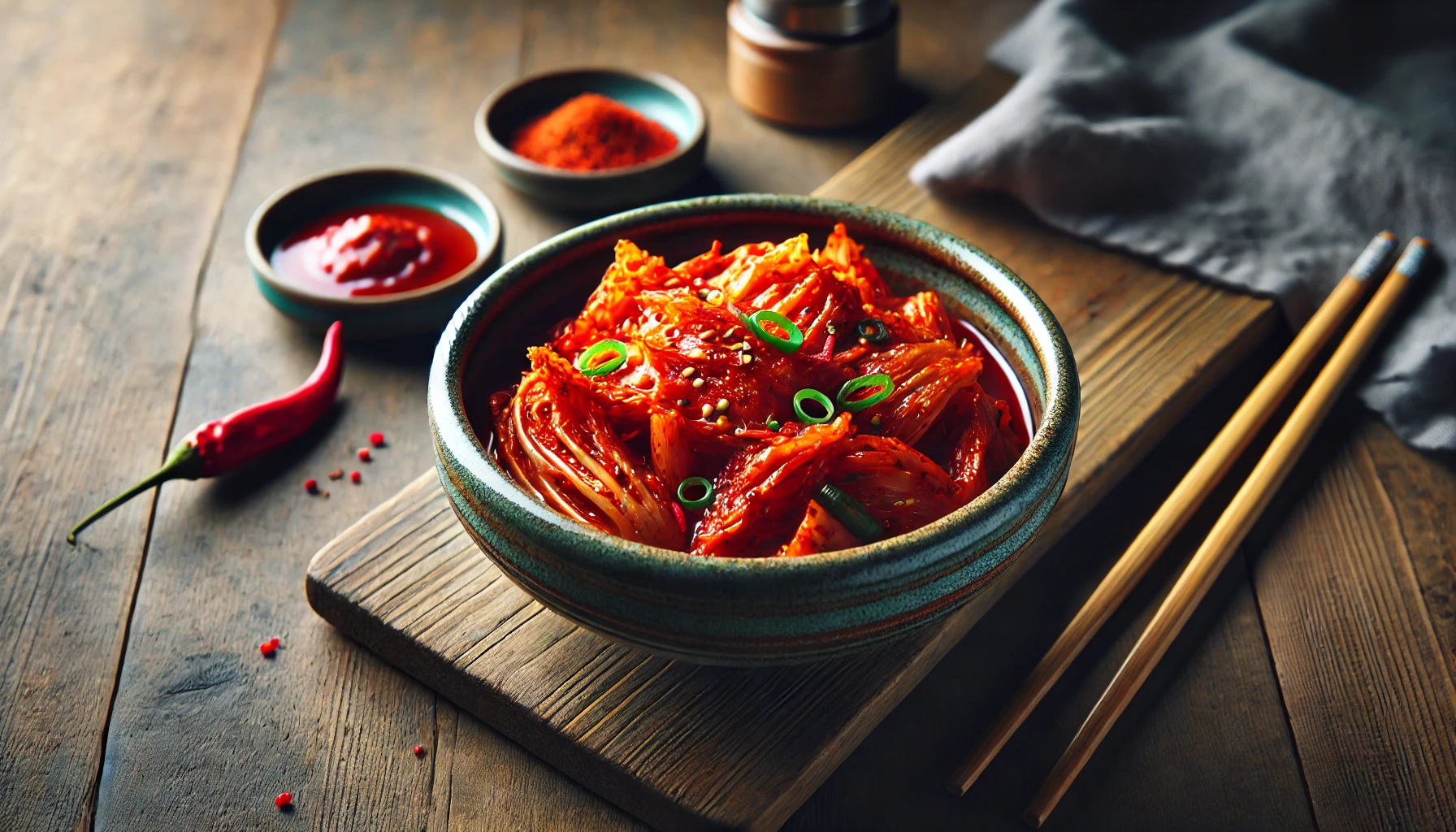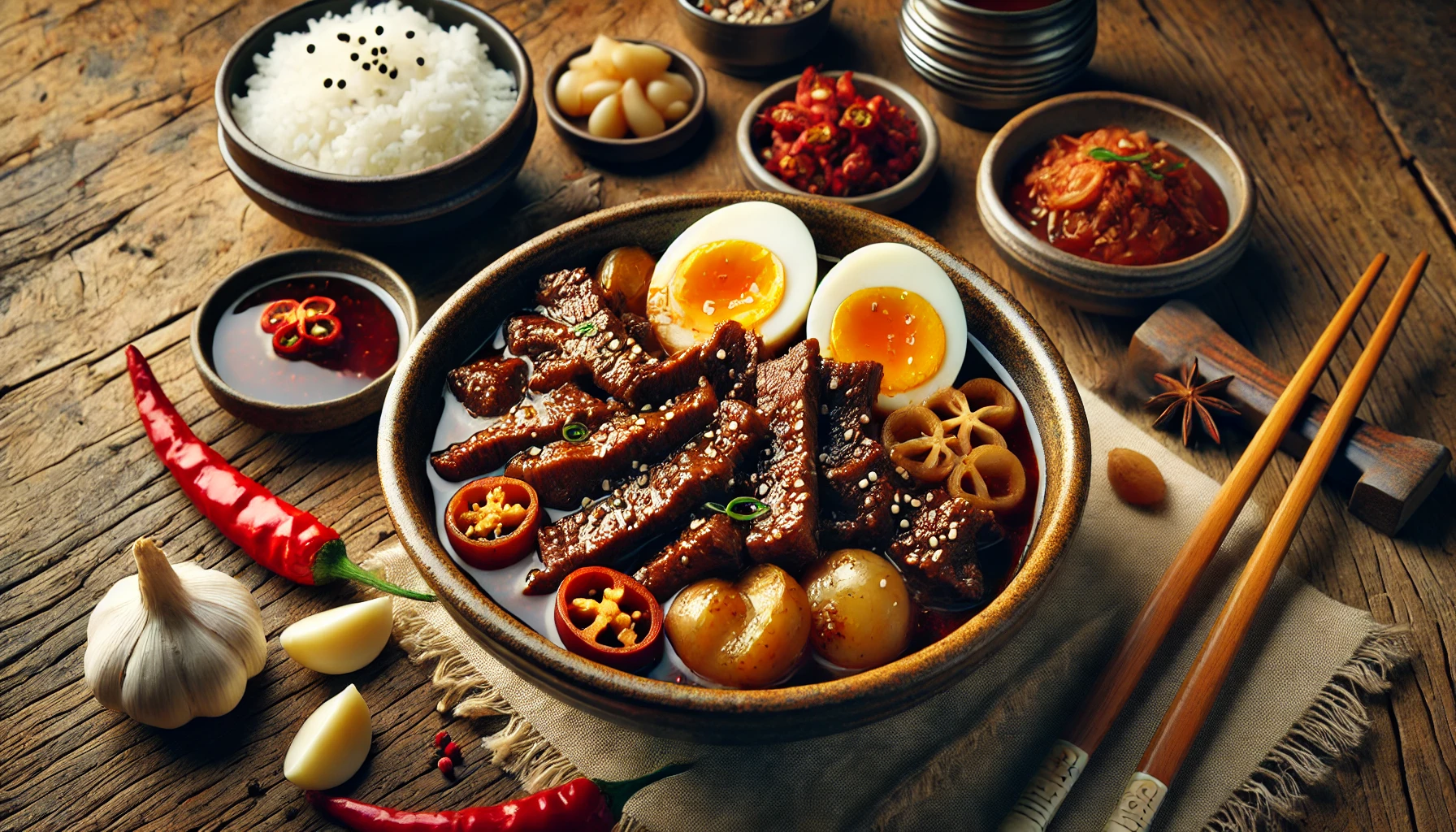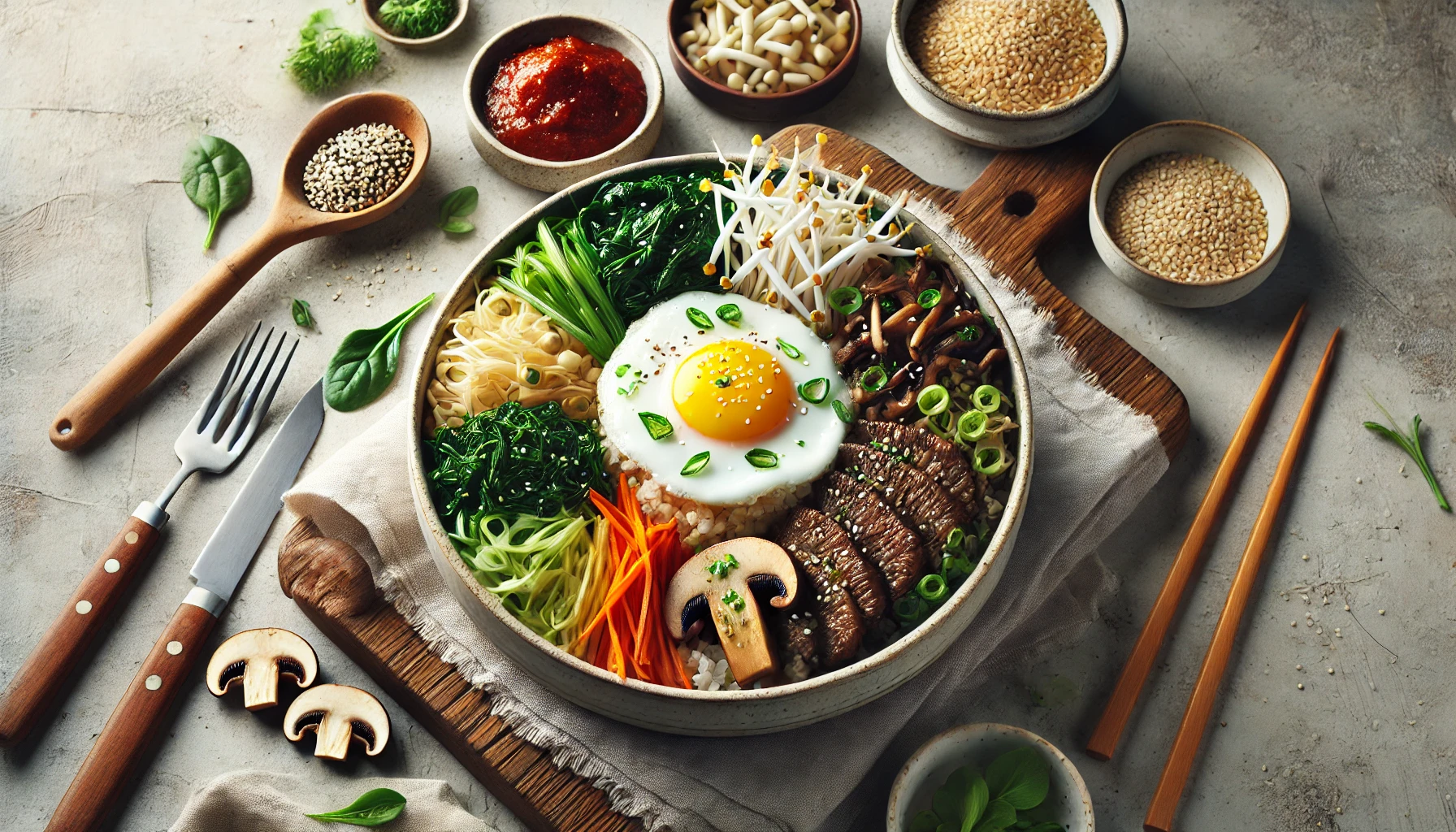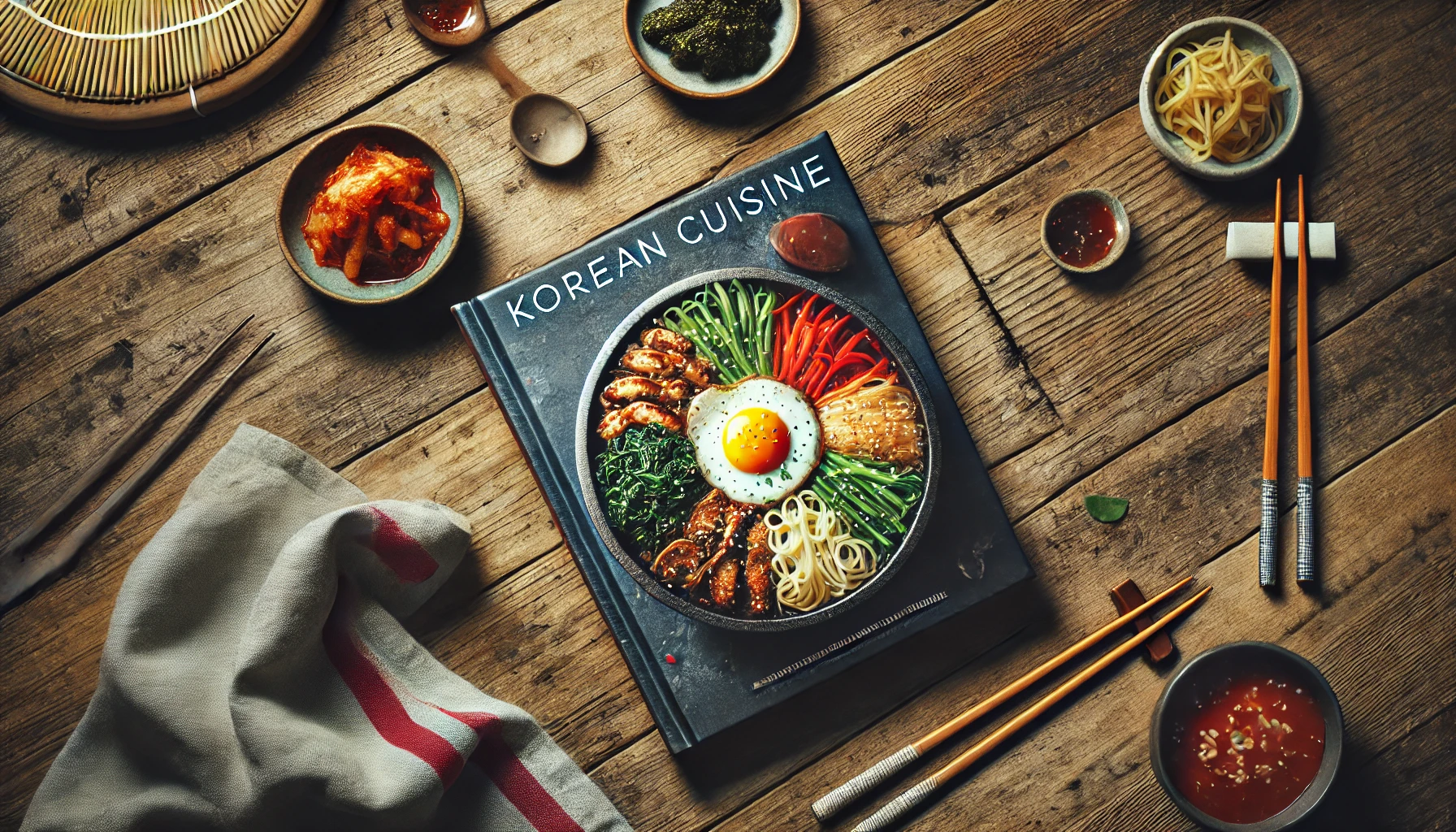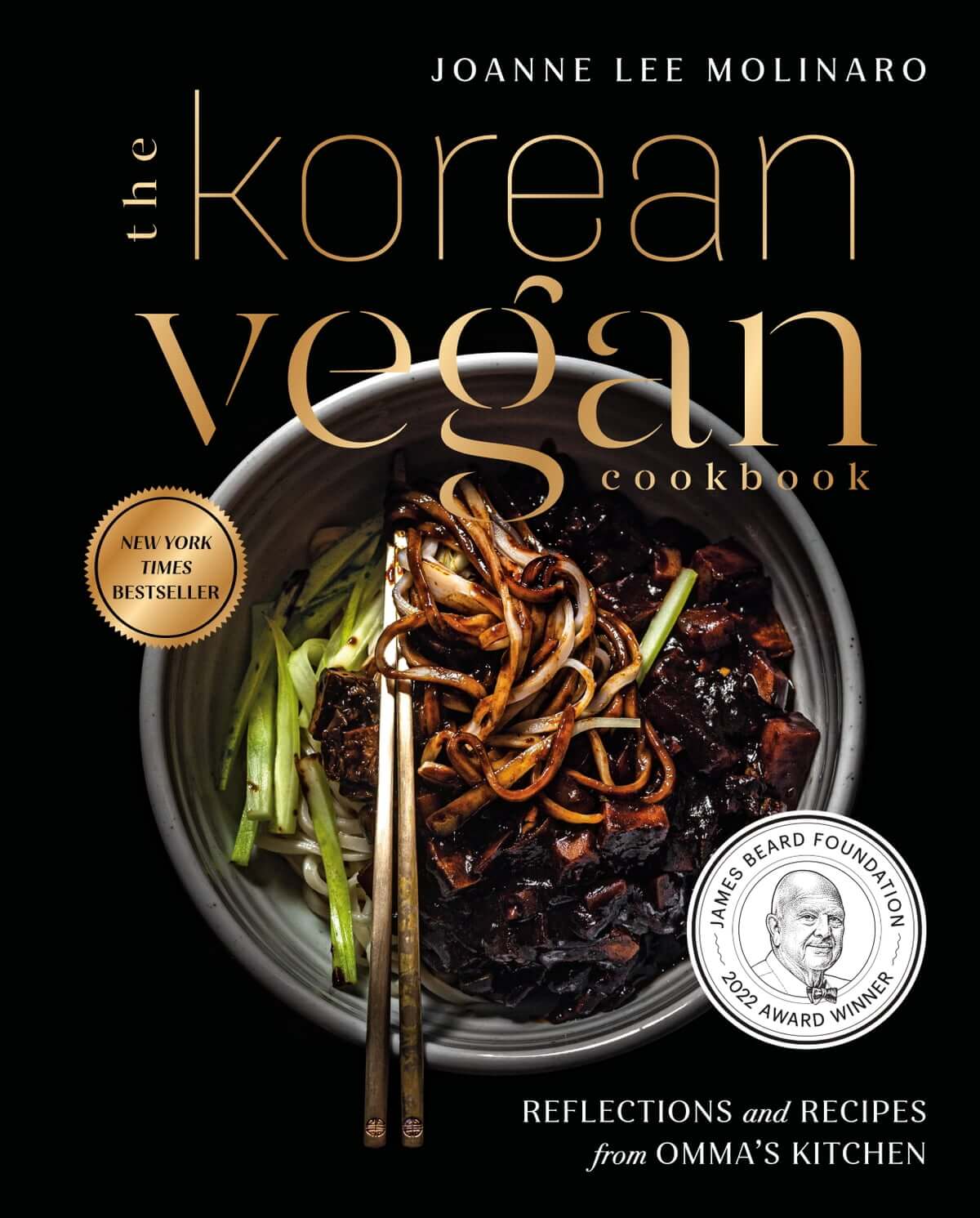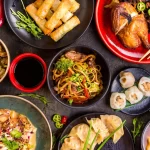Korean cuisine is known for its bold flavors, colorful presentation, and unique combinations of ingredients. From spicy stews to sweet and savory barbecue, Korean dishes offer a wide variety of tastes that make this cuisine so special. Whether you’re a fan of traditional meals or just curious to explore new food, there’s something in Korean cuisine for everyone to enjoy.
In this guide, we’ll introduce you to the top 12 Korean dishes you should try. These popular foods highlight the flavors and traditions that make Korean dishes stand out. Ready to discover the best of Korean cuisine? Let’s get started!
Top 12 Korean Dishes Must-Try
- Bibimbap (Mixed rice with toppings)
- Bulgogi (Sweet marinated beef)
- Japchae (Stir-fried glass noodles)
- Tteokbokki (Spicy rice cakes)
- Samgyeopsal (Grilled pork belly)
- Kimchi Jjigae (Spicy kimchi stew)
- Jjajangmyeon (Black bean noodles)
- Haemul Pajeon (Seafood pancake)
- Sundubu Jjigae (Soft tofu stew)
- Kimbap (Rice rolls in seaweed)
- Naengmyeon (Cold noodles)
- Hotteok (Sweet pancakes)
1. Bibimbap (Mixed rice with toppings)
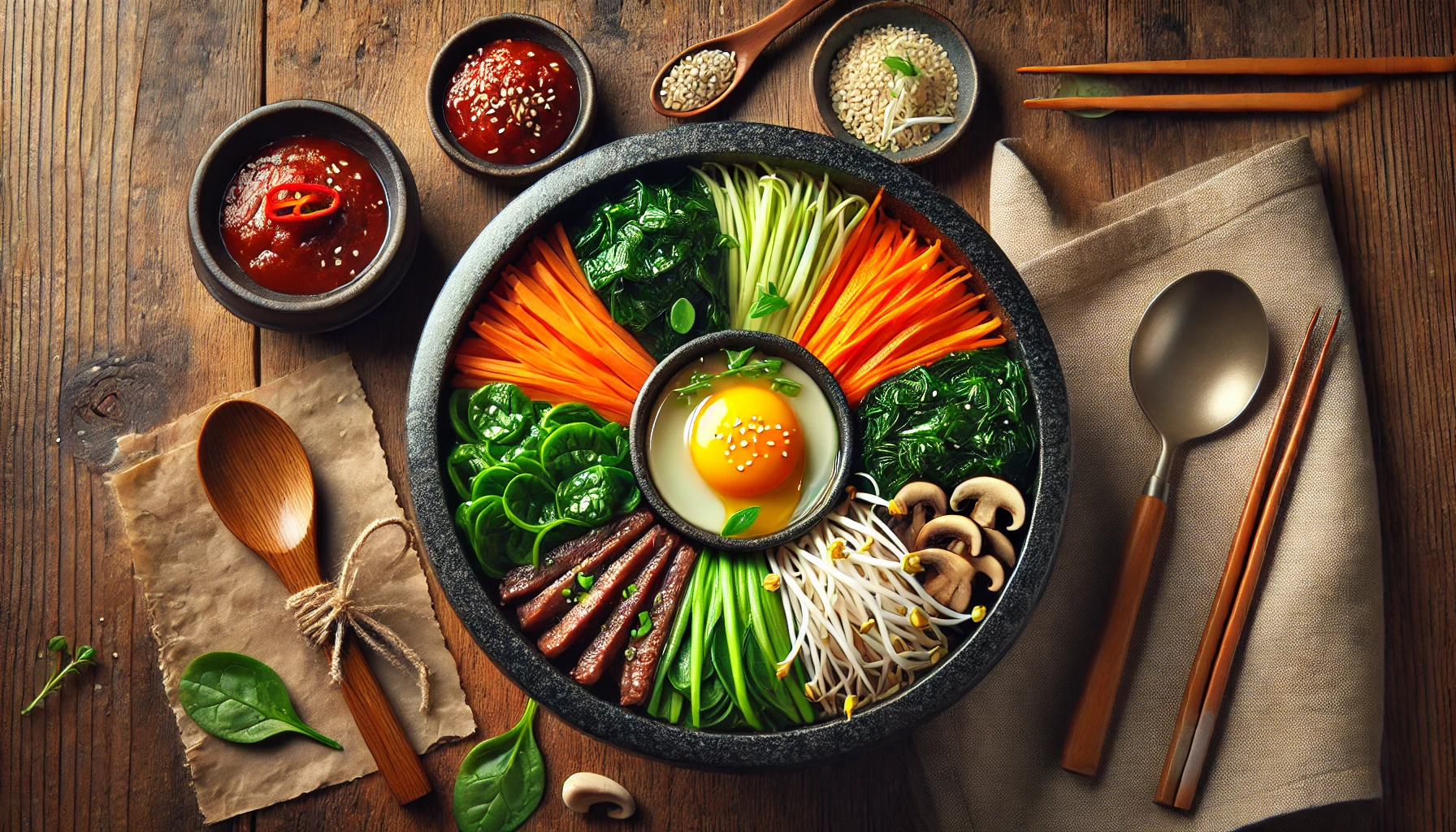
Bibimbap, meaning “mixed rice” in Korean, is a vibrant and flavorful dish that represents the heart of Korean cuisine. It is made with steamed rice topped with fresh and seasoned vegetables, marinated meat (often beef), and a fried or raw egg. The flavors come together with gochujang (spicy chili paste) or sesame oil, creating a delicious mix of textures and tastes. It’s not only tasty but also visually stunning, with its colorful ingredients traditionally arranged in a bowl before mixing.
This dish is easy to customize, making it popular with both locals and international food lovers. You can choose your favorite protein or swap vegetables for seasonal or regional options, making Bibimbap a versatile meal. It’s a healthy, balanced dish, perfect for lunch or dinner.
Main Ingredients:
- Steamed rice
- Assorted vegetables (e.g., spinach, carrots, zucchini, bean sprouts, mushrooms)
- Marinated meat (beef, chicken, or tofu)
- Fried or raw egg
- Gochujang (spicy chili paste)
- Sesame oil
2. Bulgogi (Sweet marinated beef)
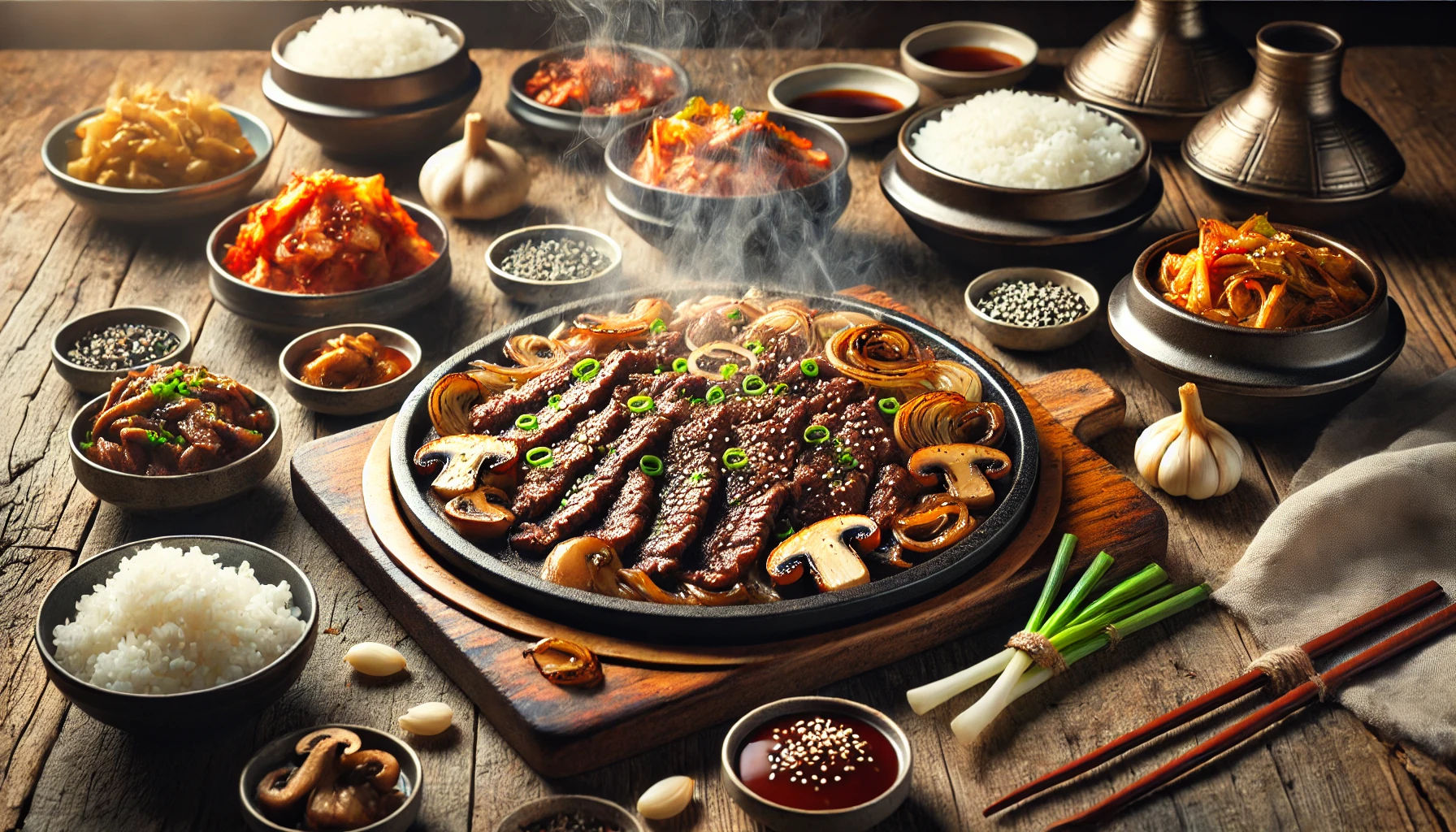
Bulgogi, meaning “fire meat” in Korean, is a classic dish made with thinly sliced beef marinated in a sweet and savory sauce. The marinade, typically made with soy sauce, sugar, garlic, sesame oil, and other seasonings, infuses the meat with rich flavors. Grilled or pan-cooked to perfection, Bulgogi is tender, juicy, and bursting with a delicious mix of sweetness and umami.
This dish is a favorite at Korean BBQs and is often served with rice, lettuce wraps, or side dishes like kimchi. Its versatility also makes it a popular choice for stir-fries or as a topping for rice bowls or noodles. Bulgogi’s irresistible flavor and aroma make it a must-try for anyone exploring Korean cuisine.
Main Ingredients:
- Thinly sliced beef (typically ribeye or sirloin)
- Soy sauce
- Sugar or honey
- Garlic
- Sesame oil
- Green onions
- Optional additions: grated pear or apple for extra sweetness
3. Japchae (Stir-fried glass noodles)
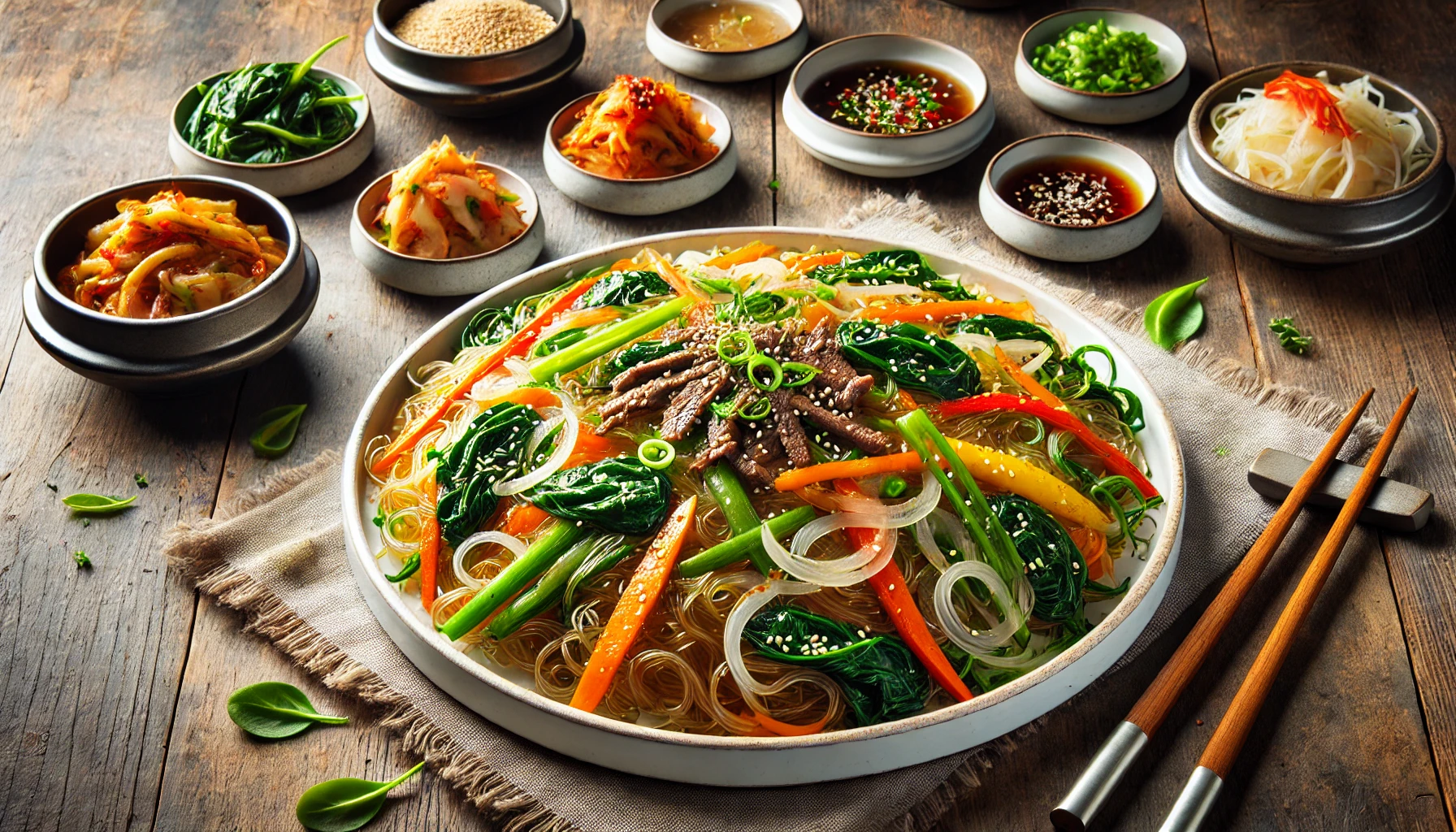
Japchae, a beloved Korean dish, features stir-fried glass noodles made from sweet potato starch. These chewy and slightly translucent noodles are cooked with a mix of colorful vegetables, thinly sliced meat (often beef), and a light soy-based sauce. The dish is known for its perfect balance of sweet and savory flavors, making it a favorite for special occasions and everyday meals alike.
Japchae is highly versatile, allowing for endless customization by adding or swapping ingredients to suit your taste. Often enjoyed as a main dish or side, it’s served warm or at room temperature, making it ideal for gatherings or packed lunches.
Main Ingredients:
- Sweet potato glass noodles
- Vegetables (e.g., spinach, carrots, mushrooms, onions, bell peppers)
- Soy sauce
- Sugar or honey
- Sesame oil
- Thinly sliced meat (optional)
- Sesame seeds (for garnish)
4. Tteokbokki (Spicy rice cakes)
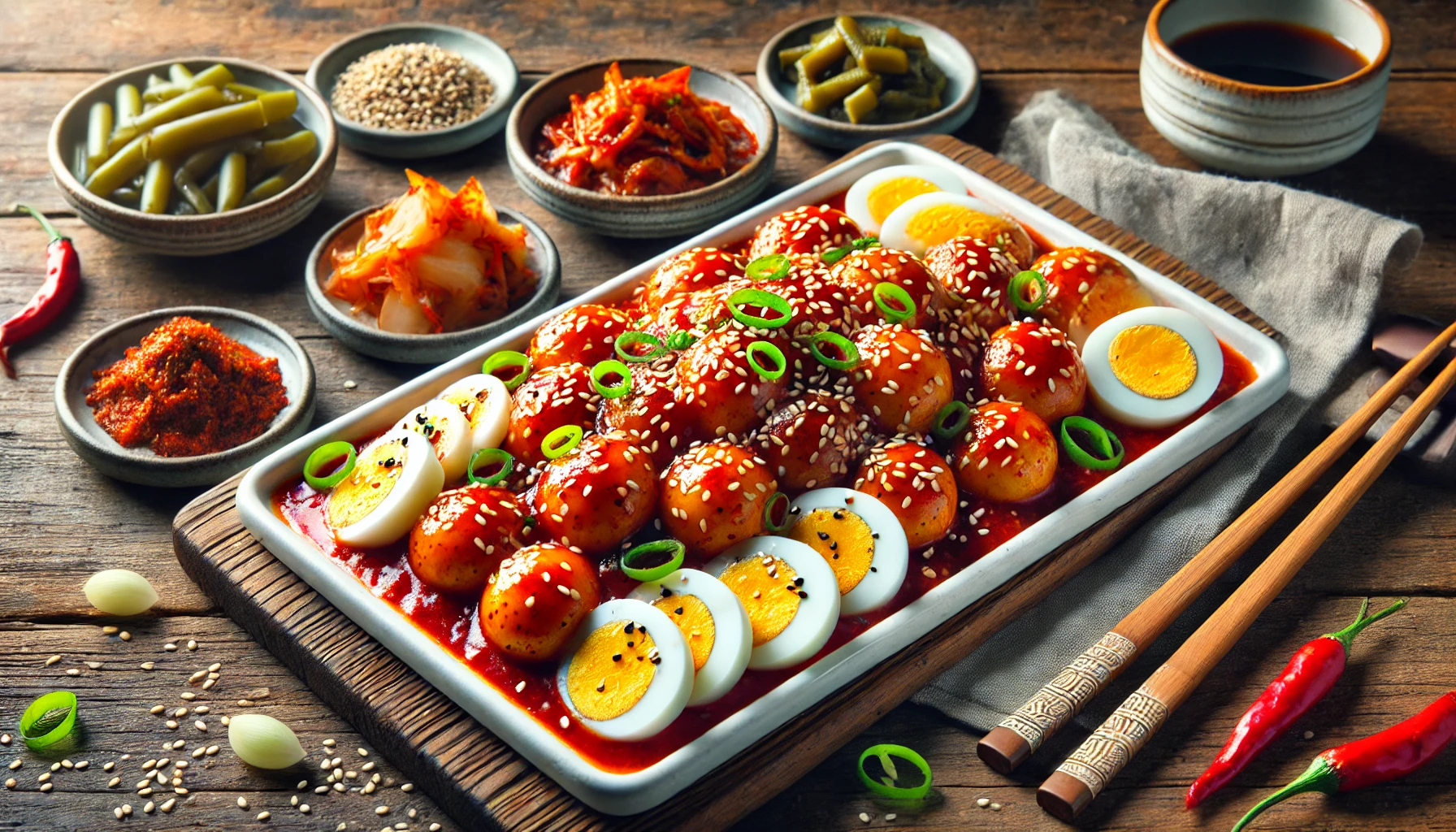
Tteokbokki, one of Korea’s most popular street foods, is a dish made with chewy rice cakes cooked in a spicy and slightly sweet gochujang (red chili paste) sauce. The rice cakes are often accompanied by fish cakes, boiled eggs, and green onions, creating a flavorful and satisfying snack or meal. Its bold, spicy taste and unique texture make it a must-try for fans of Korean cuisine.
Tteokbokki is versatile and can be customized with additional ingredients like cheese, ramen noodles, or vegetables to suit your preferences. Whether enjoyed at a street stall or made at home, this dish delivers a comforting and fiery kick that’s hard to resist.
Main Ingredients:
- Rice cakes (tteok)
- Gochujang (red chili paste)
- Fish cakes (eomuk)
- Boiled eggs
- Green onions
- Sugar or honey (for sweetness)
- Optional additions: cheese, ramen noodles, or vegetables
5. Samgyeopsal (Grilled pork belly)
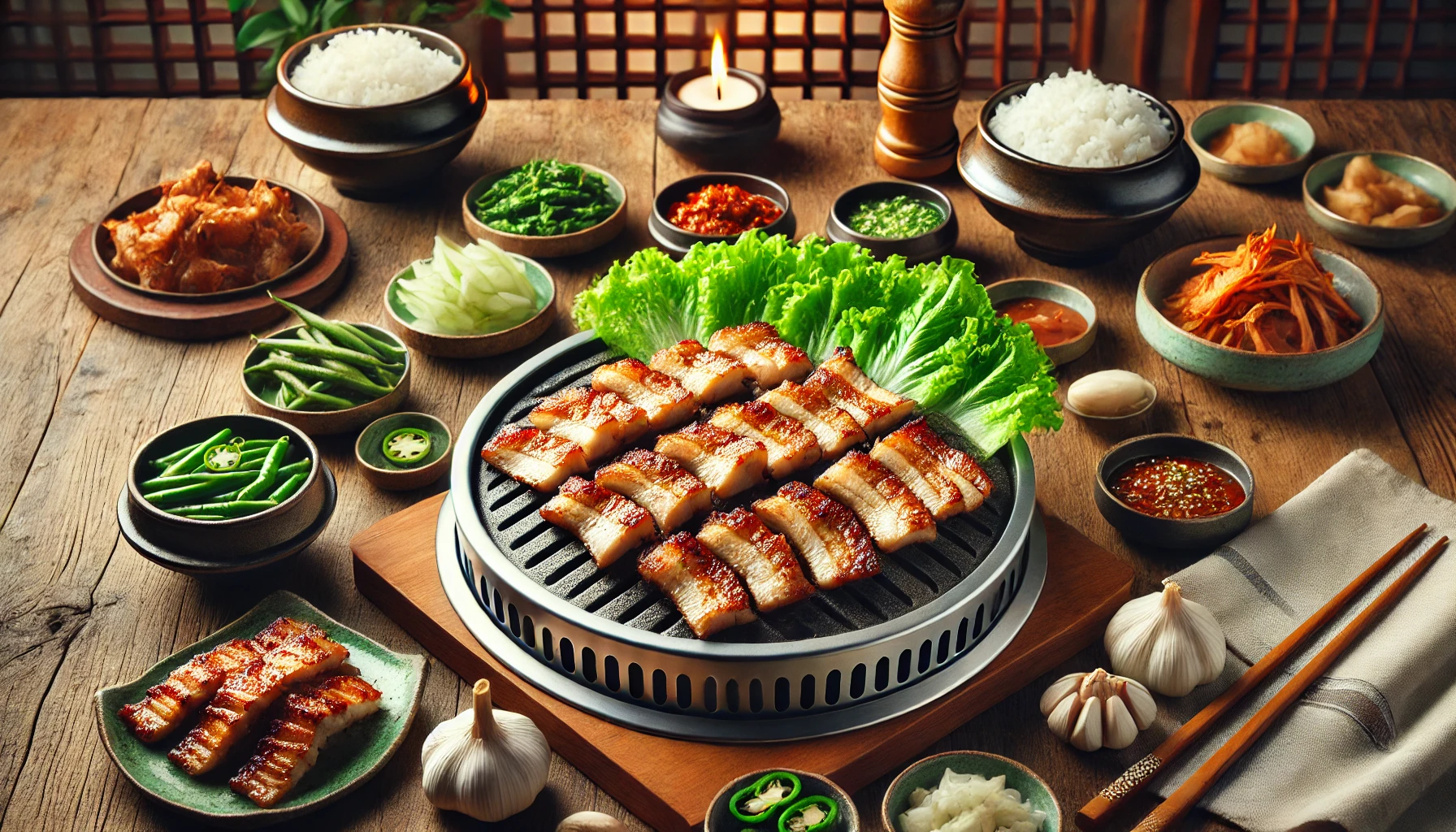
Samgyeopsal, a staple of Korean BBQ, is a dish featuring thick, juicy slices of grilled pork belly. The pork is typically cooked at the table on a hot grill, allowing diners to enjoy the smoky aroma and crispy, caramelized edges as they cook their own meat. Unlike marinated meats, Samgyeopsal is often served plain or lightly seasoned, letting the natural flavor of the pork shine.
This dish is usually paired with an array of side dishes like kimchi, garlic, and ssamjang (a savory dipping sauce), and it’s commonly wrapped in lettuce or perilla leaves for a refreshing bite. Samgyeopsal is not just a meal but a social experience, perfect for gatherings and celebrations.
Main Ingredients:
- Pork belly slices
- Lettuce or perilla leaves (for wrapping)
- Ssamjang (dipping sauce)
- Garlic and green chilies (optional)
- Side dishes like kimchi and pickled radish
6. Kimchi Jjigae (Spicy kimchi stew)
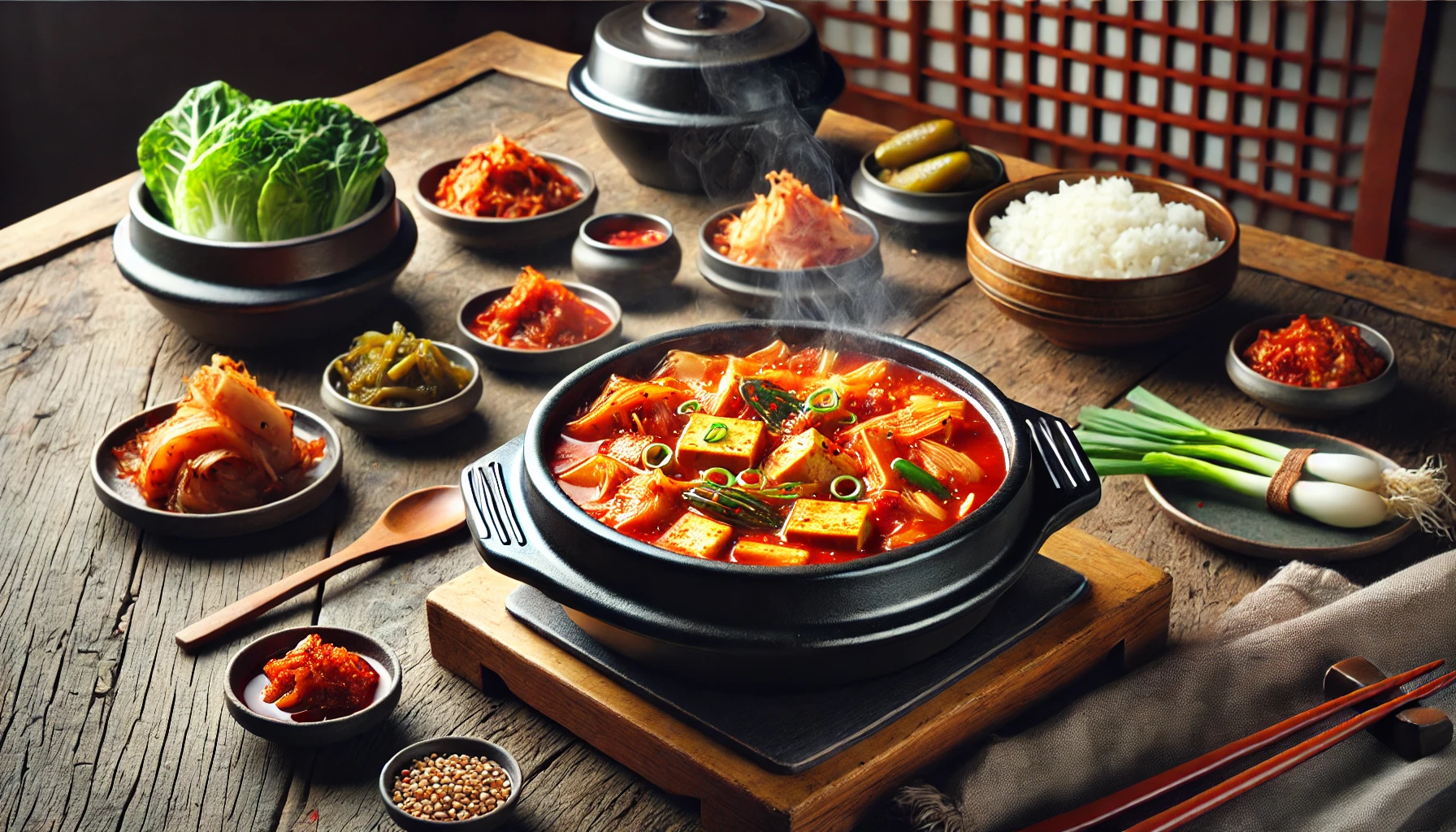
Kimchi Jjigae is a comforting and hearty stew made with fermented kimchi, tofu, pork (or seafood), and a flavorful broth. This spicy and tangy dish is a staple in Korean households, loved for its bold flavors and warming qualities. The long-simmering process deepens the flavors, blending the spicy, sour notes of kimchi with the savory richness of the broth.
Often enjoyed with a bowl of steamed rice, Kimchi Jjigae is perfect for any season and can be customized with additional ingredients like mushrooms, potatoes, or noodles. Its satisfying heat and robust taste make it a go-to dish for Korean cuisine enthusiasts.
Main Ingredients:
- Kimchi (fermented cabbage)
- Pork, tuna, or seafood (optional)
- Tofu
- Gochugaru (red chili flakes)
- Garlic and onion
- Broth (anchovy, beef, or vegetable)
- Green onions (for garnish)
7. Jjajangmyeon (Black bean noodles)
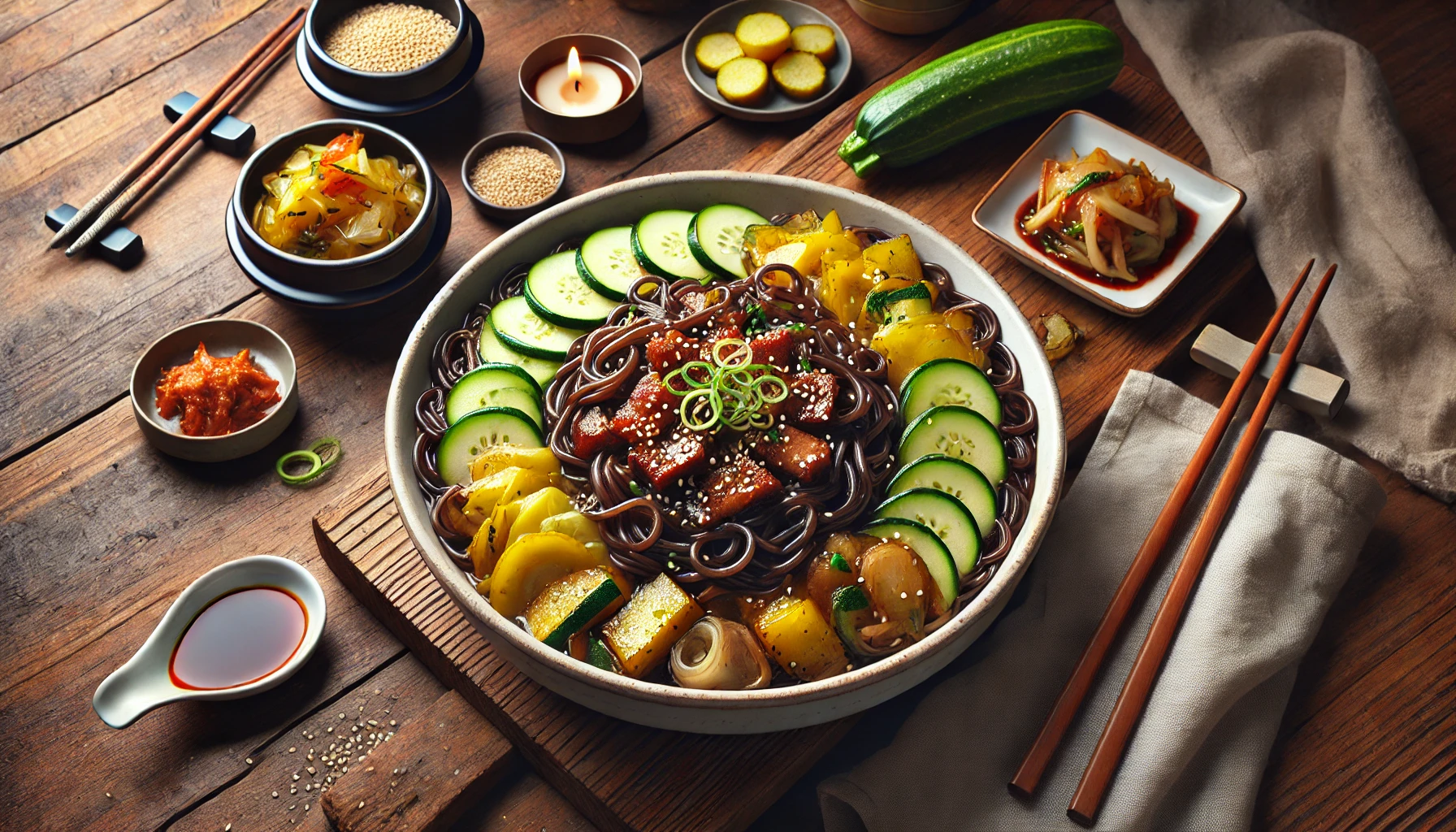
Jjajangmyeon is a beloved Korean-Chinese fusion dish made with thick wheat noodles topped with a rich, savory black bean sauce. The sauce, known as jjajang, is made from fermented black bean paste (chunjang) stir-fried with diced pork or beef, onions, zucchini, and occasionally potatoes. Its deep, umami flavor and creamy texture make it a comforting and satisfying meal.
This dish is a popular choice for quick, casual meals and is often enjoyed during celebrations like Black Day, a Korean holiday for singles. Jjajangmyeon is a favorite among both kids and adults, perfect for those seeking a unique and hearty noodle dish.
Main Ingredients:
- Wheat noodles
- Black bean paste (chunjang)
- Pork or beef (optional)
- Onion, zucchini, and potatoes
- Garlic
- Optional garnish: cucumber or sesame seeds
8. Haemul Pajeon (Seafood pancake)
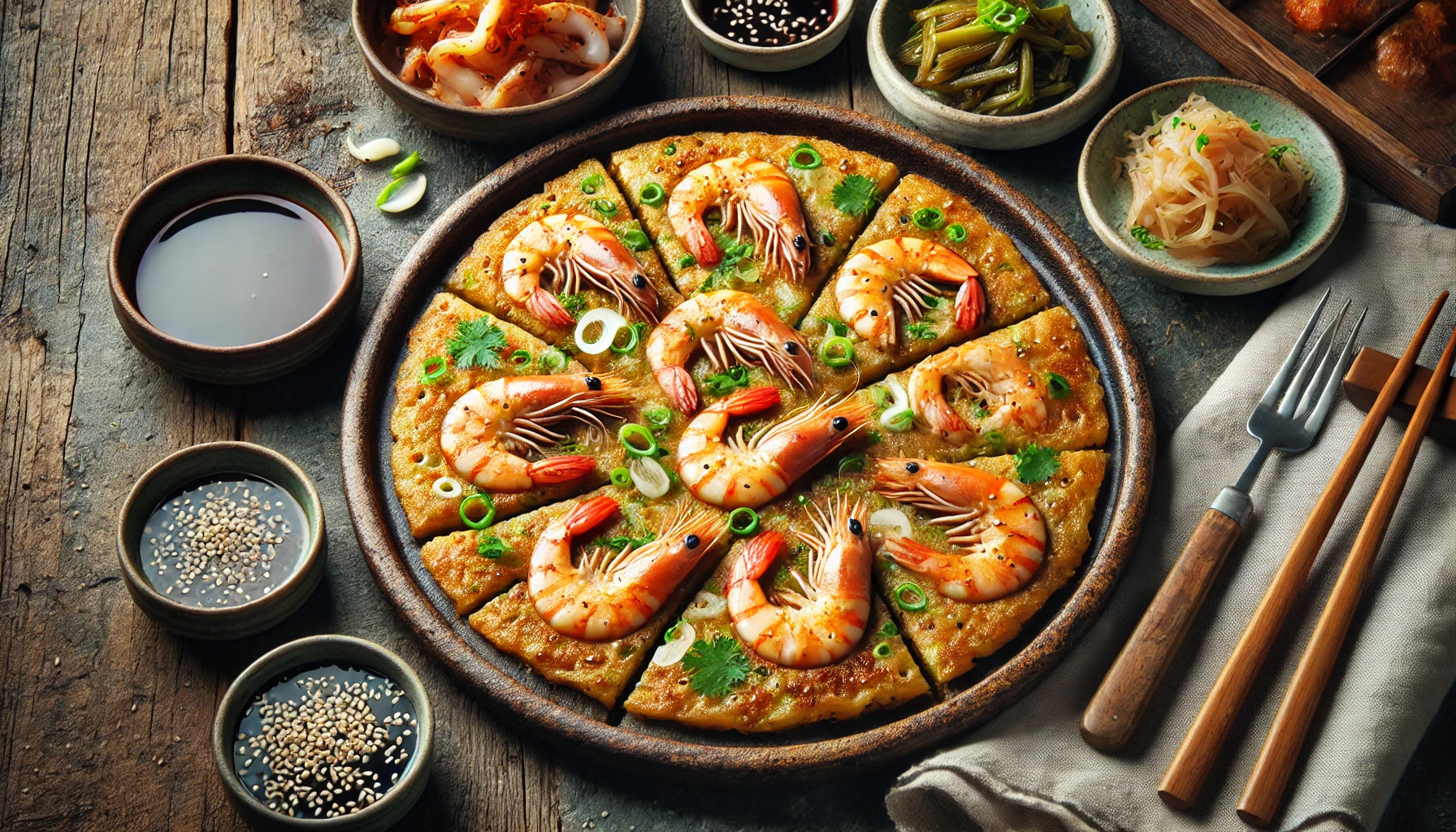
Haemul Pajeon, or Korean seafood pancake, is a savory and crispy dish made with a batter of flour, eggs, and green onions, loaded with fresh seafood like shrimp, squid, and clams. It’s pan-fried to golden perfection, creating a delicious balance of soft, chewy seafood and crunchy edges. This dish is often enjoyed as a snack, appetizer, or side dish, especially during gatherings and rainy days.
Served with a tangy soy-based dipping sauce, Haemul Pajeon offers a delightful combination of flavors and textures that make it a favorite among Korean food lovers. Its versatility allows for different seafood combinations to suit your taste.
Main Ingredients:
- Flour and egg batter
- Green onions
- Shrimp, squid, clams, or other seafood
- Garlic (optional)
- Soy-based dipping sauce (soy sauce, vinegar, sesame seeds)
9. Sundubu Jjigae (Soft tofu stew)
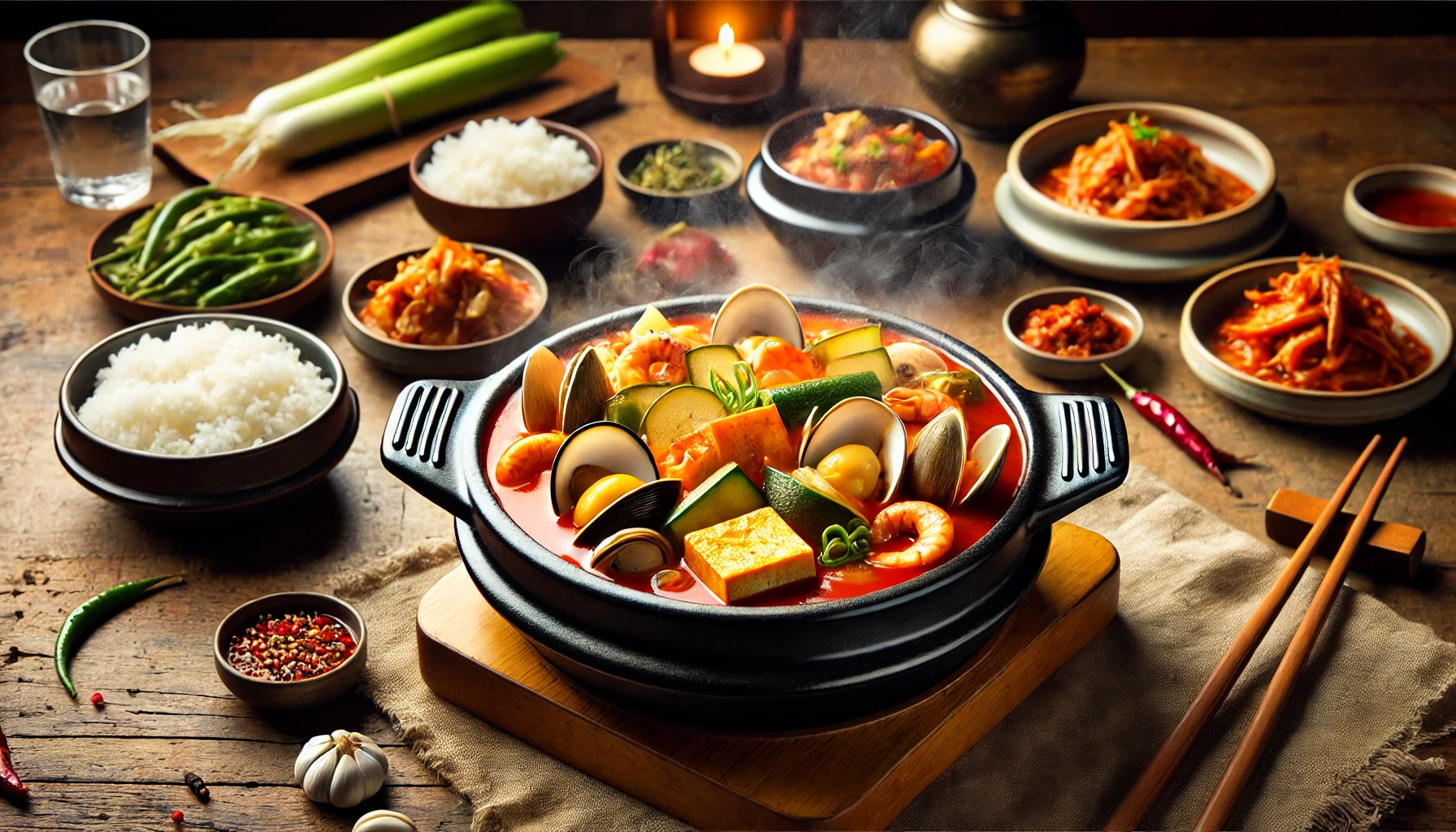
Sundubu Jjigae, or soft tofu stew, is a spicy and comforting Korean dish made with silken tofu, vegetables, and a flavorful broth. Often enriched with meat, seafood, or both, the stew is served piping hot in a stone pot, creating a rich and hearty meal. Its spicy, savory flavor is balanced by the creamy texture of the soft tofu, making it a popular choice for cold days or as a satisfying comfort food.
This versatile dish can be customized with your preferred protein and spice level. It’s typically enjoyed with steamed rice and pairs well with classic Korean side dishes like kimchi or pickled radishes.
Main Ingredients:
- Silken tofu
- Broth (anchovy, beef, or vegetable)
- Gochugaru (red chili flakes)
- Garlic and onion
- Optional protein: pork, beef, or seafood
- Egg (cracked raw on top just before serving)
- Green onions (for garnish)
10. Kimbap (Rice rolls in seaweed)
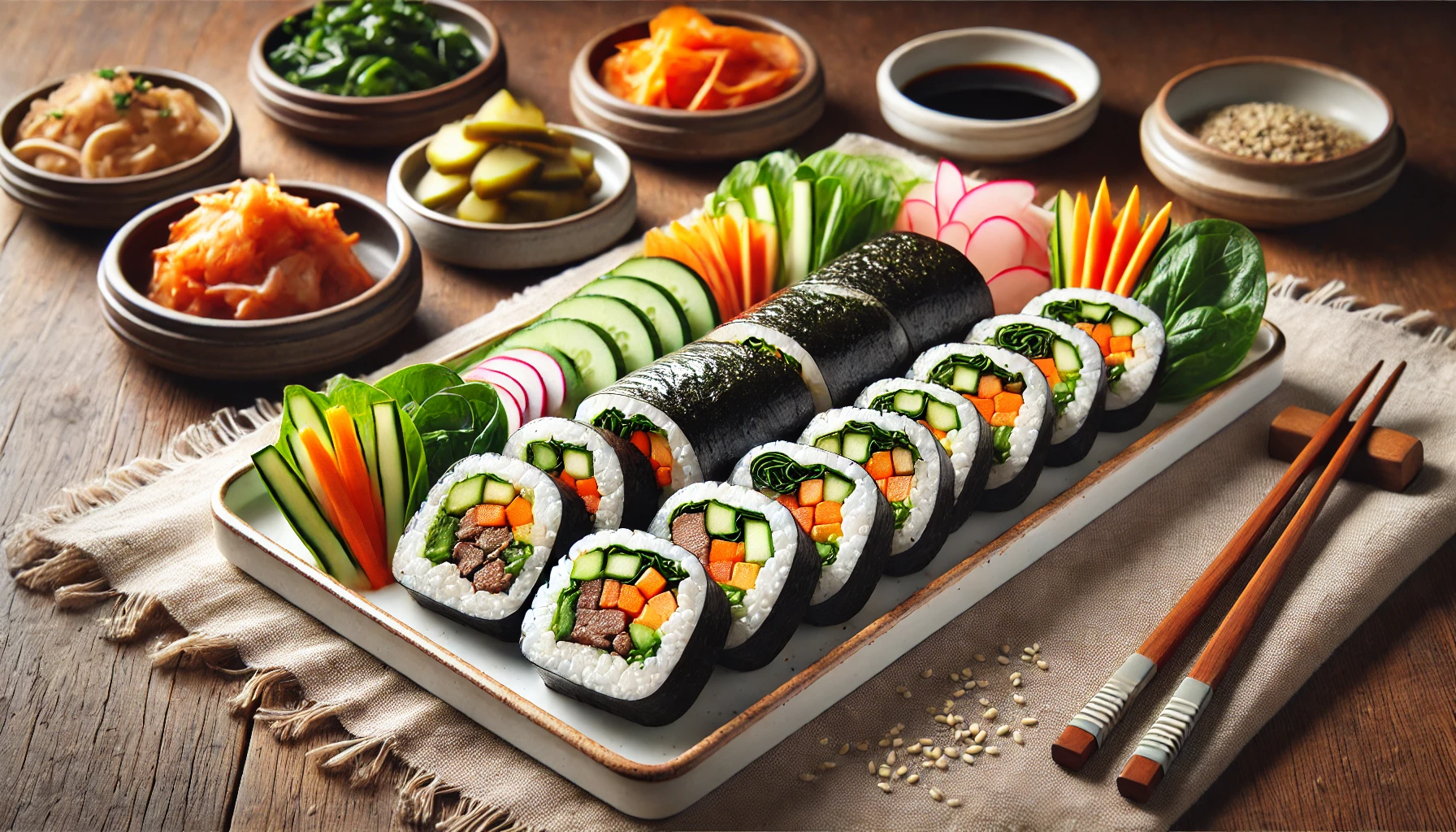
Kimbap, often called Korean rice rolls, is a versatile and flavorful dish made with steamed rice, assorted fillings, and a sheet of seaweed (gim) rolled into a compact, portable snack or meal. The fillings can include vegetables like carrots and cucumbers, proteins such as beef, egg, or tofu, and sometimes pickled radish for a tangy crunch. Each bite offers a perfect balance of textures and flavors.
Kimbap is a popular choice for picnics, school lunches, or quick meals on the go. Its adaptability allows for endless variations, making it a favorite for anyone looking to enjoy a light yet satisfying Korean dish.
Main Ingredients:
- Steamed rice (seasoned with sesame oil and salt)
- Seaweed sheets (gim)
- Fillings: carrots, cucumbers, spinach, pickled radish, egg, or protein (beef, chicken, or tofu)
- Sesame seeds (optional, for garnish)
11. Naengmyeon (Cold noodles)
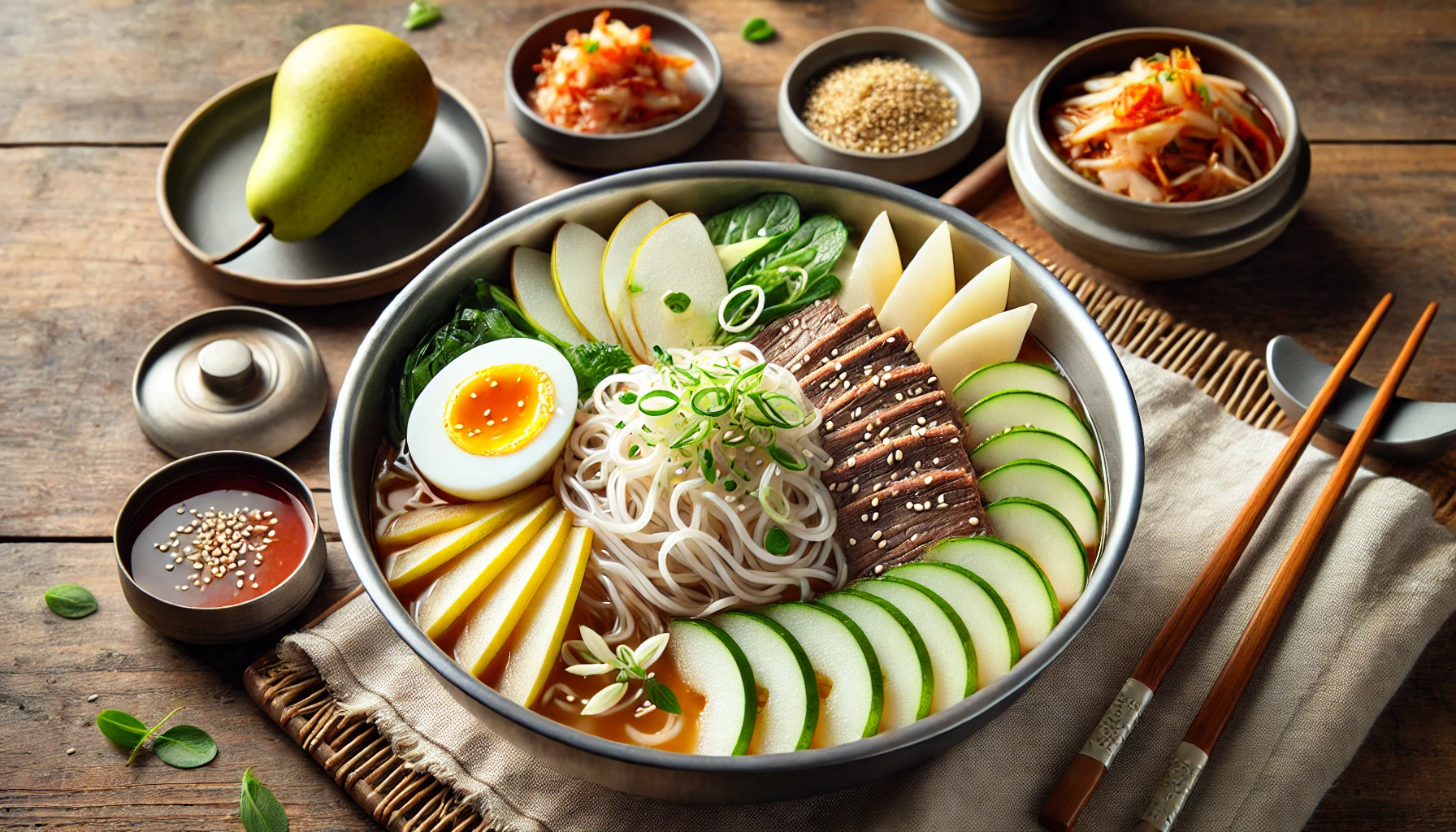
Naengmyeon, or cold noodles, is a refreshing and flavorful Korean dish traditionally enjoyed during the summer. Made with buckwheat or sweet potato starch noodles, it’s served chilled in a tangy, icy broth or mixed with a spicy sauce. The dish is often garnished with sliced cucumber, pear, boiled egg, and sometimes thinly sliced beef, offering a delightful mix of textures and tastes.
This cooling dish is perfect for hot days, providing a light yet satisfying meal. Naengmyeon’s unique flavor profile and chewy noodles make it a must-try for those looking to experience a different side of Korean cuisine.
Main Ingredients:
- Buckwheat or sweet potato starch noodles
- Icy broth (beef or radish-based) or spicy sauce (gochujang-based)
- Cucumber and pear slices
- Boiled egg
- Thinly sliced beef (optional)
- Vinegar and mustard (served on the side for added flavor)
12. Hotteok (Sweet pancakes)

Hotteok, or Korean sweet pancakes, is a beloved street food treat with a crispy exterior and a warm, gooey filling. The dough is made from wheat flour and yeast, stuffed with a mixture of brown sugar, cinnamon, and crushed nuts or seeds. When fried, the filling melts into a delicious syrup, creating a perfect balance of sweetness and crunch.
Often enjoyed during the colder months, Hotteok is a comforting snack that’s easy to love. Its rich, sugary flavor and satisfying texture make it a favorite for kids and adults alike, whether as a quick treat or dessert.
Main Ingredients:
- Wheat flour dough (with yeast)
- Brown sugar
- Cinnamon
- Crushed nuts or seeds (e.g., walnuts, sunflower seeds)
- Cooking oil (for frying)
These 12 iconic Korean dishes showcase the rich diversity and bold flavors of Korean cuisine, offering something special for every palate. From the comforting warmth of Kimchi Jjigae to the refreshing coolness of Naengmyeon and the sweet delight of Hotteok, these dishes invite you to experience the heart and soul of Korea’s culinary traditions. Whether you’re new to Korean food or a seasoned enthusiast, these must-try dishes are sure to satisfy your cravings.
Now that we’ve explored these delicious mains, let’s dive into the world of Korean Side Dishes (Banchan)—the small yet flavorful accompaniments that make every Korean meal complete.
Korean Side Dishes (Banchan)
- Kimchi (Spicy fermented cabbage)
- Kongnamul (Seasoned bean sprouts)
- Namul (Seasoned greens)
- Myulchi Bokkeum (Sweet stir-fried anchovies)
- Gamja Jorim (Soy-braised potatoes)
- Gyeran Jjim (Steamed egg custard)
- Jangjorim (Soy-braised beef)
- Jeon (Pan-fried pancakes)
- Pickled Radish (Sweet-tangy radish)
- Ojingeochae (Spicy dried squid)


